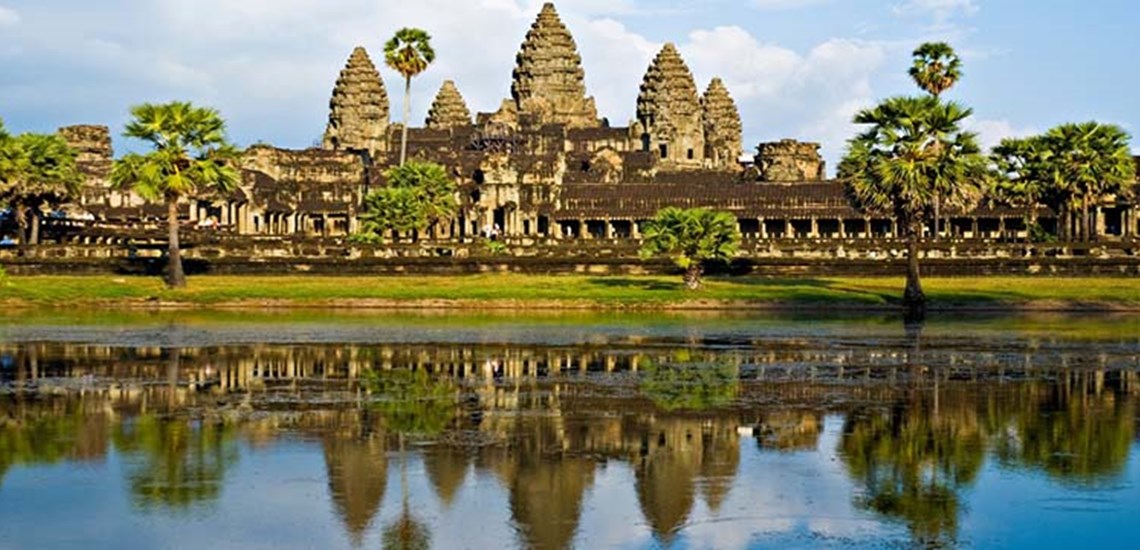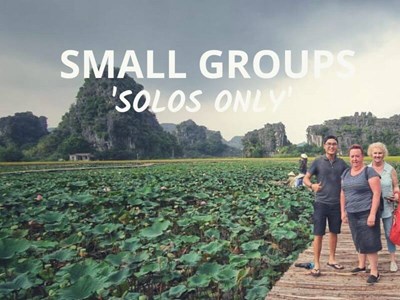Cambodia
Slowly but steadily recovering from a string of misfortunes ever since Angkor fell to the Thais in the early 1430s, Cambodia is now an established destination for travellers. Despite being littered with temples that seem to defy the test of time, the country offers so much more than a spiritual reawakening of sorts. This Southeast Asian nation serves up adventure and history, depressing accounts and tales of hope, terror and thrill, all in equal parts. You may very well leave the country in a daze, but never without a level of admiration for its people’s remarkable resilience and spirit.
Though it’s Angkor Wat up north that usually initially attracts foreigners to Cambodia, it is worth one’s time and effort to venture off the beaten path and explore the rest of the countryside. At the country’s south western tip, the seaside town of Sihanoukville is said to be home to the best beaches in the country. On the other end of the map, out east, Kratie is a river town that offers stunning views of the Mekong River and, occasionally, a rare view of the Mekong River dolphin.
- Location: Cambodia, Asia
- Size: 181, 035 km2
- Capital: Phnom Penh
- Largest Cities: Phnom Penh, Ta Khmao, Sisophon, Battambang, Siem Reap
- Climate: Expect a hot and humid climate once you enter the country, and brief bursts of rain when visiting during the wet months of May to October. Following the heavy rains of September and October, the period between December and January brings forth the ideal climate and the increased number of tourists to boot.
- Population: Around 15 million people
Language: Khmer, some French
Religion: Theravada Buddhism, Islam
Literacy Rate: 77.6%
Government Type: Constitutional monarchy/parliamentary democracy
Head of State: Monarch
Land Borders: Thailand to the northwest, Laos to the northeast, Vietnam to the east
- Currency: Riel
- Natural Resources: Oil and gas, timber, minerals like iron ore, manganese and phosphates, and gemstones
- Main Agriculture: Rice, rubber, corn, vegetables, cashew, cassava, and silk
- Main Industry: Tourism, garments, construction, rice milling, wood and rubber
- Electricity: 230 V AC, 50 Hz
- Time Zone: GMT +7
Country Tel. Code:+ 855
- Visa/Passport: Australian passport holders need to acquire a visa to enter the country. An e-visa may be acquired for select entry points into Cambodia, or a visa may be acquired on arrival. Tourist visas are valid for 30 days, and passports should be valid for six months when applying for visa upon arrival.
- Airport: Phnom Penh International Airport (PNH) is 10 kilometres west of Phnom Penh, and Siem Reap International Airport (REP) 6 kilometres outside of Siem Reap. The latter is the country’s largest airport, while the former is its second largest.
- Departure Tax: The US$25 international departure tax is usually included in the cost of plane tickets.
- Getting Around: Bus services and shared taxis are available for travelling over long distances and are widely used by tourists for moving from one of the country’s main cities to another. The train system is out of the question, though ferryboats along major rivers are sometimes available on select routes. For short distances, tourists may choose from a range of local transport: cyclos (pedicabs), lorries (bamboo trains), motos (motorcycle taxis), outboards (small boats), remorque-kangs, and remorque-motos.
- Credit Cards: Keep cash on hand, as credit cards are accepted mostly in high-end establishments but not so much in smaller ones.
- Drinking: There is no minimum drinking age in Cambodia.
- Shopping: Avid collectors of folk crafts will enjoy haggling for these items in practically every corner of the country. Spices, baskets, carvings, and textiles make good souvenirs or gifts, and are widely available. One thing to take note of while shopping is the Heritage Friendly Business Logo, which indicates that a business works with its community in nurturing local arts and culture or in supporting development efforts..
- Tipping: A standard five to ten percent tip is appreciated though not expected.
100% Australian; we 'get' the Australian travel style. And, better still, our arms are open to welcome our friends from other countries around the world, who'd like to travel with friendly Aussies.©
We've been creating and delivering the best ever holidays for solo travellers since 2006. As a boutique tour operator, we delight in detail, delivering personal service and finding your next best memory.©

